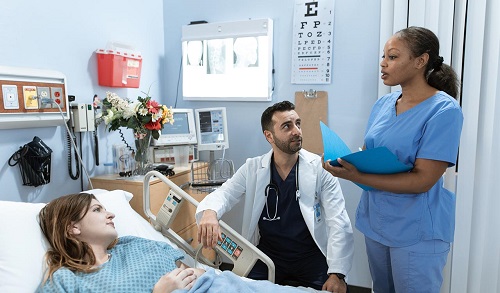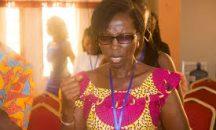Ghanaian/African migrants in Finland and health issues

• African migrants in Finland are employed in jobs such as health
Today, I focus on Ghanaian/African migrants in Finland and health issues. Health is wealth, the saying goes.
Finland is committed to the integration of migrants into the Finnish society, as I keep pointing out.
A number of research studies from surveys and other in-depth enquiries have shown a trend of increasing efforts to integrate African and other migrants into the Finnish society.

As the Finnish Institute for Health and Welfare (THL) has pointed out, health and wellbeing are an important part of integration of immigrants in Finland (see www.thl.fi).
Work and health
Most Ghanaian/African migrants in Finland work hard for their living. Like many other workers, the migrants are employed in various jobs such as in the technology and educational sectors as well as the cleaning, health, and entrepreneurship areas.
Also, most migrants are very active in the labour market and are gainfully employed as paid workers or as self-employed entrepreneurs, although they often have unstable or marginal positions in the Finnish labour market as cleaners, are happy to find a source of income to sustain them.
As experts point out, migrants travel with their health profiles; they encounter diseases as any other human does where they live.
Health and vulnerability
Health experts point out that migrant communities can be highly vulnerable to diseases, especially certain infectious diseases.
Experts say those who came to Finland as refugees or asylum seekers and their family members are often in a more vulnerable position in terms of their health (see www.thl.fi).
Research and media reports have shown in many countries that there are structural or societal/cultural factors that result in quite high rates of infection or ill-health among migrants, when compared with the majority population.
It is suggested that for example language barrier, lack of information, the nature of the work of migrants in professions where working from home is not possible (in the case of the Covid-19 pandemic), not accessing healthcare, etc. can present some of the factors for migrants’ vulnerability to diseases and infections.
Gender and health
Health issues about migrants also concern gender and how women and children can be highly vulnerable.
Thus, gender and health is one area that attracts attention about the efforts for migrants’ wellbeing as part of their integration into the Finnish society. It is an area where males and females can access healthcare equally, without any hindrances along gender lines.
It has been found that women report health problems more than men.
Migrant associations, information and social networks
Migrants associations have become important points for securing information and education about health issues, particularly among migrants. Such a situation was much evidenced among migrants during the corona virus situation.
Moreover, these associations and institutions become networks that create an important social capital as well as outlets for sharing and gaining information or knowledge.
Public agencies, migrant associations and other non-governmental organisations (NGOs) in Finland have been publishing information to help educate people about preventing corona virus infections and other diseases.
Generally, migrant associations formally create awareness among their members and other migrants usually in collaboration with some Finnish institutions, and are thus an important tool for many migrants to be positively active and to get their interest and claims heard.
As I wrote previously, the role of migrant associations acting as bridge-builders for the integration and inclusion of migrants through participation in the decision making process and by acting as a representative voice is highly appreciated in Finland. Thank you!













